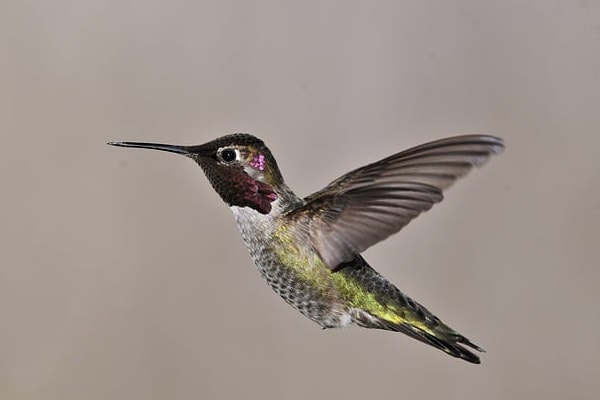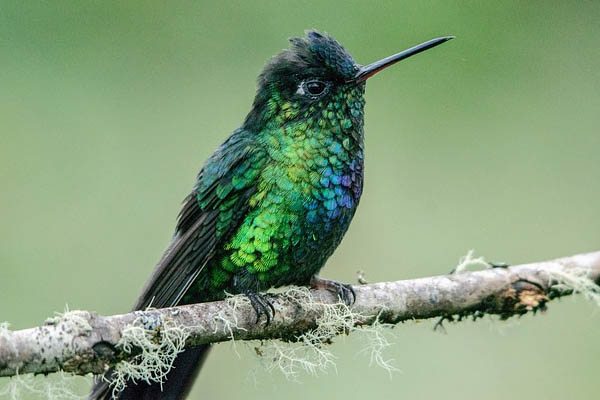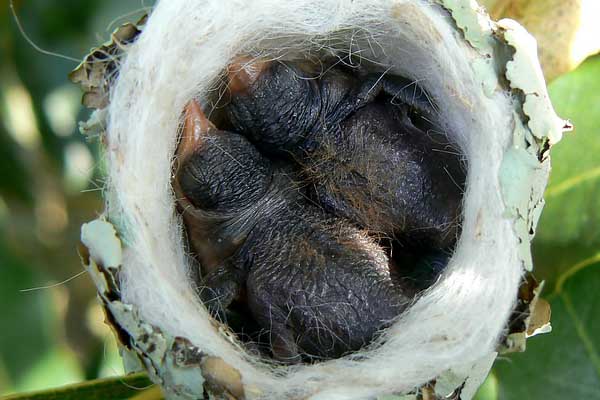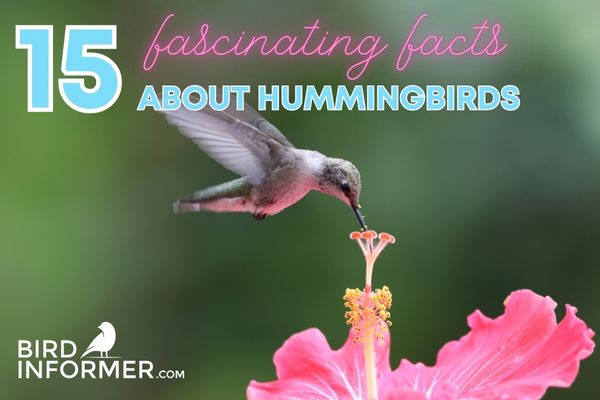Contents
- The Hummingbird Is The Smallest Migrating Bird
- Hummingbirds Can Fly Backwards
- Hummingbirds Do Not Have A Sense Of Smell
- Hummingbirds Weigh Less Than A Nickel
- Hummingbirds Can’t Walk Or Hop
- Hummingbirds Consume Twice Their Body Weight In Nectar Each Day
- Hummingbirds Lay 2 Eggs On Average
- A Flock Of Hummingbirds Has Many Names
- There Are Many Species Of Hummingbirds
- Hummingbirds Can Create Hybrid Species
- A Hummingbird Can Flap Its Wings Between 50-200 Times Per Second
- Hummingbird Lifespan
- Hummingbird Heartbeat
- Hummingbird Breathing Rate
- The Hummingbird’s Pectoral Muscle Make Up 25-30% Of Its Weight
- Conclusion
Hummingbirds, those tiny marvels of the avian world, never cease to captivate our imagination with their breathtaking agility and vibrant plumage. While they may be small in size, these remarkable creatures possess a wealth of fascinating traits and behaviors that make them truly unique. In this article, we delve into the realm of hummingbirds and uncover an array of fun and surprising facts that will leave you in awe of these enchanting feathered wonders. Prepare to be amazed as we unveil the captivating world of hummingbirds and the incredible secrets they hold.
The Hummingbird Is The Smallest Migrating Bird

Hummers are the smallest migrating bird. However, like many other bird species, they do not migrate in flocks. These birds generally travel alone for up to 500 miles at a time.
Related Article: Where Do Hummingbirds Migrate During The Winter?
Hummingbirds Can Fly Backwards
Hummingbirds can fly backward. They are the only bird that can do this!
Related Article: Do Hummingbirds Fly In The Rain?
Hummingbirds Do Not Have A Sense Of Smell
Much to many’s surprise, hummers do not have a sense of smell. Therefore, they do not sniff out feeders. To find feeders and flowers, they use their excellent color vision.
Related Article: Where to Hang a Hummingbird Feeder
Hummingbirds Weigh Less Than A Nickel
Hummingbirds are small in size and weigh less than a nickel.
Hummingbirds Can’t Walk Or Hop

On occasion, you may see a Hummingbird perched. They use their legs only for perching and moving sideways. They are unable to walk or hop like most birds.
Hummingbirds Consume Twice Their Body Weight In Nectar Each Day
Hummingbirds need to consume a lot of nectar each day. When they drink the nectar found in feeders, they move their tongues in and out of the feeder. They can do this about 13 times per second.
Related Article: Why Do Hummingbirds Fight?
Hummingbirds Lay 2 Eggs On Average

Female Hummers lay about two eggs, and their eggs are about the size of a jellybean. Their nests are about the size of a half-dollar.
Related Article: Do Hummingbirds Use a Birdhouse?
A Flock Of Hummingbirds Has Many Names
A flock of hummingbirds is referred to by many names. These include a glittering, a tune, a shimmer, a bouquet, or a hover.
There Are Many Species Of Hummingbirds
In North and South America, there are well over 330 different species of hummingbirds.
Hummingbirds Can Create Hybrid Species
Various species of hummingbirds can breed together. When this happens, they create a hybrid species. For this reason, identification can be very challenging.
Want To See More Hummingbirds In Your Yard? Click The Button Below To Find Out How!
A Hummingbird Can Flap Its Wings Between 50-200 Times Per Second
The amount is dependent on their flight’s purpose, the surrounding air conditions, and the direction of flight.
Hummingbird Lifespan
In the wild, hummingbirds can live anywhere between 3-12 years. This depends on habitat conditions, predators, and many other factors.
Hummingbird Heartbeat
The hummingbird’s heart beats about 1,200 times per minute. The human heart beats only 60-100 bpm.
Hummingbird Breathing Rate
When resting, a hummingbird will take about 250 breaths per minute. However, when in flight, their breathing rate increases.
Related Article: Hummingbird FAQs
The Hummingbird’s Pectoral Muscle Make Up 25-30% Of Its Weight
The pectoral muscles are the broad chest muscles, which aid in flying.
Conclusion
As we conclude our exploration of hummingbirds and their delightful secrets, we are left with a profound appreciation for these extraordinary creatures. From their unmatched ability to hover in mid-air to their impressive migration journeys spanning thousands of miles, hummingbirds remind us of the wonders and intricacies of the natural world. Their vibrant presence and cheerful songs bring joy to our lives and serve as a testament to the incredible diversity found within our ecosystems. So, the next time you catch a glimpse of a hummingbird darting by, take a moment to marvel at their remarkable feats and cherish the magic they bring to our world.

